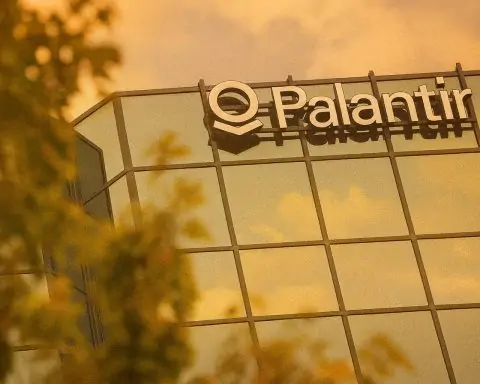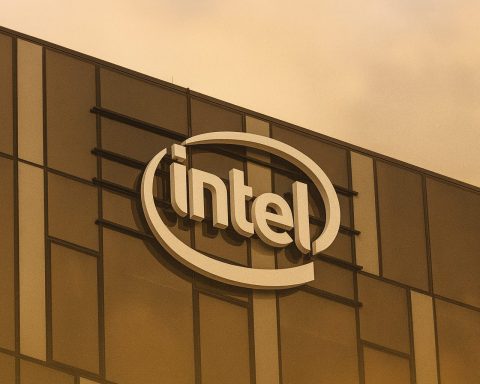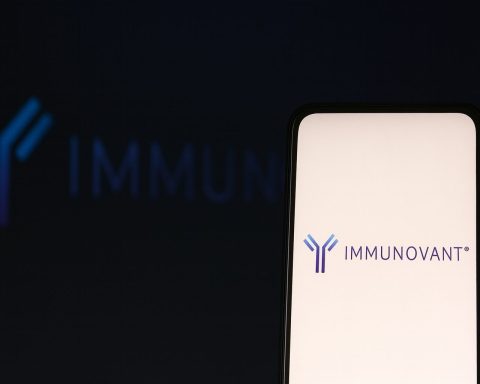- IO Biotech’s Phase 3 melanoma vaccine Cylembia added to Merck’s Keytruda narrowly missed statistical significance, with median progression-free survival of 19.4 months versus 11 months for Keytruda alone.
- Fosun Pharma’s deal with Expedition Therapeutics grants rights outside Greater China to XH-S004, a first-in-class oral DPP-1 inhibitor for chronic respiratory diseases, in a pact potentially worth up to $645 million including $120 million upfront and up to $525 million in milestones.
- NextRNA Therapeutics announced on August 11 it is winding down operations after cash constraints, leaving about 27 employees.
- FDA approved ketamine (brand name KETARx) from PharmaTher Holdings for surgical anesthesia and pain management on August 11, after addressing earlier manufacturing issues with no new clinical trials required.
- GSK’s gepotidacin received FDA priority review for uncomplicated gonorrhea, with a decision expected by December, and, if approved, it would be the first oral treatment for gonorrhea; the drug is a novel topoisomerase inhibitor previously approved for urinary tract infections as Blujepa.
- Novartis reported that ianalumab (VAY736) met primary endpoints in two Phase 3 Sjögren’s syndrome trials, NEPTUNUS-1 and NEPTUNUS-2, showing a significant reduction in disease activity versus placebo.
- Novartis also announced that ianalumab hit its goal in the Phase 3 VAYHIT2 trial for immune thrombocytopenia, prolonging time to treatment failure and increasing the proportion with sustained platelets at six months after four monthly injections.
- SetPoint Medical’s vagus nerve stimulation implant for rheumatoid arthritis won FDA approval, becoming the first electroceutical device on the market, followed by a $140 million funding round to launch in the United States.
- U.S. COVID-19 indicators show infections rising in 45 states as of Aug. 8, with wastewater at a moderate plateau, rising hospitalizations, and Omicron subvariants EG.5 and FL.1.5.1 gaining traction ahead of fall boosters.
- A dengue outbreak in Pacific Island nations tied to climate change has infected more than 16,500 people and caused 17 deaths in 2025, with Fiji, Samoa, and Tonga hardest hit.
Over the past 48 hours, the life sciences world delivered a cascade of major headlines – from an experimental cancer vaccine that almost hit its mark, to a historic FDA approval of ketamine, to a disease outbreak blamed on climate change. Below we recap the most significant biotech, pharmaceutical, medical, and public health developments from August 11 and 12, 2025. Each section highlights key stories – including corporate deals, clinical trial results, regulatory moves, tech innovations, and global health alerts – with expert commentary and sources for verification.
Biotech
Cancer Vaccine Trial Narrowly Misses Goal
Merck’s Keytruda immunotherapy was combined with an experimental vaccine in IO Biotech’s pivotal melanoma trial. Danish startup IO Biotech revealed that its Phase 3 skin cancer vaccine Cylembia just fell short of statistical significance when added to Merck’s Keytruda in advanced melanoma [1] [2]. Patients on the combo went a median 19.4 months without disease progression vs. 11 months for Keytruda alone [3] – an impressive improvement, but narrowly under the threshold needed for a clear win. “This was a very narrow miss, just by a hair,” IO Biotech CEO Mai-Britt Zocca said of the result [4]. Despite the setback, the vaccine was well-tolerated and even hinted at better overall survival, so the company will meet with FDA officials to discuss a possible path forward [5]. Analysts note FDA could still entertain an approval for a subset of patients or once more survival data mature next year [6], underscoring that the almost-success leaves room for hope.
Major Licensing Deal Expands Respiratory Drug’s Reach
Fosun Pharma, one of China’s leading drugmakers, announced a lucrative partnership to globalize its novel respiratory drug XH-S004 [7] [8]. Fosun’s subsidiary will grant U.S.-based Expedition Therapeutics rights to develop and market XH-S004 (a first-in-class oral DPP-1 inhibitor for chronic respiratory diseases) outside of Greater China [9]. The deal could net up to $645 million for Fosun, including $120 million upfront and milestone payments up to $525 million based on sales [10]. XH-S004 is currently in mid-stage trials for non-cystic fibrosis bronchiectasis and COPD, with no approved rivals in its class worldwide [11]. Industry leaders on both sides celebrated the cross-border collaboration. “XH-S004 is an exciting compound that targets neutrophilic inflammation, an important driver of many chronic respiratory diseases,” said Yi Larson, Expedition’s CEO, adding that the partnership will accelerate development for COPD and other unmet needs [12]. Fosun’s chairman noted the drug’s “unique mechanism and clinical value” have been “highly recognized by our partners”, and the alliance will “enable global patients to benefit from this innovative therapy as soon as possible” [13].
Funding Crunch and Shake-Ups in the Sector
It’s been a mixed week for biotech companies battling financial headwinds. On Aug. 11, RNA therapy startup NextRNA Therapeutics disclosed it is winding down operations after running low on cash [14]. The Cambridge-based biotech, which had 27 employees, could not secure sufficient funding for its programs and becomes one of the latest casualties of a tougher funding climate. Even larger players are streamlining – Absci, an AI-driven drug developer, and cell therapy firm Poseida Therapeutics (recently acquired by Roche) both announced layoffs to refocus priorities [15] [16]. Biopharma layoffs have ticked up about 3% this past year amid market challenges [17]. However, it’s not all gloom in biotech financing. Venture investors continue to show selective optimism – for example, Frazier Life Sciences just raised a $1.3 billion fund, its largest ever and one of the few new biotech VC funds formed in the current downturn [18]. This massive war chest (surpassing Frazier’s prior ~$987 million fund) signals that capital is still available for promising science [19]. And some startups are managing to secure big rounds: SetPoint Medical – fresh off an FDA approval for its novel arthritis device – closed $140 million in new financing to launch its therapy [20] (see Medical section). In short, while many early-stage biotechs face a cash crunch, the most groundbreaking players can still attract hefty investments in 2025’s volatile climate.
Pharma
Ketamine Wins FDA Approval for Surgical Pain
In a milestone for psychedelic-derived medicines, the FDA approved ketamine (brand name KETARx) as a new option for surgical anesthesia and pain management [21]. Announced on August 11, this approval is a major victory for Toronto-based PharmaTher Holdings, which repurposed ketamine – a decades-old anesthetic and party drug – into a modern formulated therapy [22]. Regulators had twice sent the company back to address minor manufacturing issues, but ultimately no new clinical trials were required [23]. With ketamine already on the WHO’s essential medicines list for other uses, analysts predict the global ketamine market will expand significantly following this nod [24]. PharmaTher’s CEO was exuberant at achieving what he called a “historic FDA approval.” “Today marks a new chapter for PharmaTher…signaling a new era of growth. We remain steadfast in our mission to harness the pharmaceutical potential of ketamine for a range of mental health, neurological, and pain disorders,” said Fabio Chianelli, the company’s founder and CEO [25]. Beyond surgical use, the approval paves the way for broader ketamine research – the company is already exploring ketamine for depression, Parkinson’s disease, and even novel delivery methods like wearable pumps and microneedle patches [26]. The U.S. Veterans Health Administration also endorses ketamine infusion therapy for PTSD and chronic pain in veterans [27], underscoring ketamine’s therapeutic versatility. Experts say this FDA green-light could legitimize other psychedelic and “psychedelic-adjacent” drugs under development [28] as the medical community seeks new treatments for hard-to-manage conditions.
New Antibiotic Fast-Tracked for Gonorrhea
A promising weapon against drug-resistant sexually transmitted infections is on the horizon. GlaxoSmithKline (GSK) announced the FDA granted priority review to its oral antibiotic gepotidacin for treating uncomplicated gonorrhea [29]. The application’s acceptance, disclosed Aug. 11, puts gepotidacin on track for a decision by December [30]. If approved, it would become the first oral treatment for gonorrhea patients, who today must rely on injectable antibiotics [31]. Gepotidacin is a novel topoisomerase inhibitor that represents the first new antibiotic class for UTIs and STIs in decades. (Notably, the drug is already approved in the U.S. under the name Blujepa for urinary tract infections [32] [33].) GSK is counting on such infectious-disease products – alongside its new RSV vaccine – to help offset revenue losses from older drugs going off-patent [34]. With “super-gonorrhea” strains developing resistance to current meds, public health officials are eager for new options. An oral pill that patients could take at home would be a game-changer in combating this common STD, improving convenience and compliance. GSK’s gepotidacin would fill a decades-long gap in the antibiotic arsenal if it crosses the finish line [35].
Novartis Drug Excels in Autoimmune Trials
Swiss pharma giant Novartis reported top-line successes in two Phase 3 trials for its novel antibody drug ianalumab (VAY736), offering hope in difficult autoimmune diseases. On August 11, Novartis revealed that ianalumab met primary endpoints in both trials for Sjögren’s syndrome – an autoimmune disease with debilitating dry eyes, fatigue, and organ complications and no approved targeted treatments. In fact, Novartis’ studies NEPTUNUS-1 and 2 are the first-ever Phase 3 trials to show a significant reduction in Sjögren’s disease activity [36]. Patients on ianalumab showed statistically significant improvements in symptoms (measured by the EULAR disease activity index) compared to placebo [37] [38]. The drug – which works by depleting B cells and blocking BAFF signaling – was well tolerated and could become the first and only targeted therapy for Sjögren’s if approved [39] [40]. “Sjögren’s disease is serious, often unrecognized, with very limited treatment options…These Phase III studies mark a significant milestone,” said Dr. Shreeram Aradhye, Novartis’s chief medical officer [41].
Just a day later (Aug. 12), Novartis also announced that ianalumab hit its goal in a Phase 3 trial for immune thrombocytopenia (ITP), an autoimmune bleeding disorder. [42] The VAYHIT2 study in steroid-treated ITP found that adding ianalumab to standard therapy significantly prolonged the time to treatment failure – meaning patients maintained safe platelet counts for longer without relapsing [43] [44]. Treated patients were also far more likely to achieve sustained platelet increases at 6 months (a key secondary endpoint) [45] [46]. Notably, ianalumab was given as only four monthly injections, yet it offered durable disease control beyond the treatment period [47] [48]. “While current treatments for ITP can raise platelets, many patients require life-long therapy… The results from VAYHIT2 are encouraging, as they suggest ianalumab may support longer periods of disease control and reduce the need for continuous treatment,” said Dr. Adam Cuker, a hematology professor at the University of Pennsylvania, commenting on the trial [49]. Novartis’s Aradhye added that ianalumab could allow extended time off treatment with just a short course, calling the data “positive” and highlighting the potential for a much lower burden on patients if approved [50]. Taken together, the Sjögren’s and ITP wins position ianalumab as a versatile immunotherapy; Novartis is planning global regulatory submissions and additional trials in lupus and other B-cell driven diseases [51] [52].
Industry Braces for Pricing and Tariff Pressures
The pharmaceutical industry is facing intensifying political and trade pressures as of mid-August. In the United States, President Donald Trump has ramped up his campaign to force drug manufacturing onshore and drive down prices. On August 5, Trump told reporters the U.S. will impose an initial “small tariff” on pharmaceutical imports, escalating to 150% within 18 months and 250% eventually [53]. “We want pharmaceuticals made in our country,” Trump said, framing it as a national security matter [54]. He did not specify the starting tariff rate, but this aggressive plan comes as the administration conducts a Section 232 trade investigation into pharma supply chains [55] [56]. The threats are already prompting industry action: several multinational drugmakers have pledged major investments in U.S. production. AstraZeneca, for example, recently committed $50 billion to expand its U.S. manufacturing footprint in response to looming tariffs [57].
The proposed U.S. tariffs – unprecedented in scale – are rattling America’s trading partners as well. Switzerland’s government announced it will meet with top Swiss pharma executives, including from Roche and Novartis, to strategize after Washington slapped a new 39% tariff on certain Swiss exports [58]. (Pharmaceuticals weren’t directly hit by that broad tariff, but Swiss officials are “concerned by the outcome” of the U.S. probe specifically targeting drug imports [59] [60].) Swiss ministers aim to negotiate exemptions or relief by showing goodwill on U.S. price demands [61]. Separately, the Drug Price Negotiation program under the U.S. Inflation Reduction Act is moving forward, with Medicare set to begin bargaining on certain high-cost medications – another factor squeezing pharma companies’ future revenues. In summary, big pharma in 2025 finds itself in the crosshairs of tariff wars and pricing reforms, forcing proactive moves to localize production and justify the value of their therapies in a cost-conscious environment.
Medical
White House Pushes “Patient-Centric” Health Tech Revolution
The U.S. administration has launched a broad initiative to modernize how health data and digital tools serve patients. During a “Make Health Tech Great Again” forum in July, the White House rolled out plans for a new health tech ecosystem geared toward patient-centric care [62]. As announced on August 11, more than 60 health providers, insurers, and technology companies have signed on to a voluntary pledge to develop consumer-friendly health apps and improve the interoperability of health records [63]. One flagship project is to build a nationwide digital directory of healthcare providers (especially for Medicare) so patients can easily find doctors and services [64] [65]. Another focus is streamlining how personal medical information is shared – giving individuals and clinicians seamless access to data across different hospital or pharmacy systems. To support this, the Department of Health and Human Services (HHS) and its Office of the National Coordinator for Health IT (ONC) released a major final rule, nicknamed “HTI-4”, that updates federal IT standards [66]. This rule will reduce bureaucratic hurdles by mandating easier electronic prior authorizations and real-time prescription benefit checks, among other steps [67]. Health tech leaders have long complained that incompatible systems and outdated regulations impede care coordination. The new public-private game plan – which was informed by stakeholder input in spring 2025 [68] – aims to “make technology work for patients and physicians”, as the American Medical Association put it. While the California Medical Association and others are still reviewing the detailed impacts [69], the overall effort signals a bipartisan push to unlock innovation in digital health and relieve doctors from paperwork so they can focus more on patients. If successful, Americans could soon see more intuitive health apps, one-stop provider lookup tools, and fewer headaches obtaining their records or insurance approvals – a welcome shift toward treating the patient as the true center of the healthcare system.
Bioelectronic Implant Offers New Hope in Arthritis
A cutting-edge nerve stimulation device is poised to change the game for people with rheumatoid arthritis (RA). SetPoint Medical announced that the FDA has approved its implantable vagus nerve stimulation therapy – making it the first electroceutical device for RA to reach the market [70] [71]. Shortly after securing the green light (at the end of July), the California-based biotech raised $140 million in fresh funding to launch the treatment in the U.S. [72]. SetPoint’s system consists of a tiny, coin-sized stimulator surgically implanted on the vagus nerve in the neck, programmed to send electrical pulses to calm inflammation in the body [73]. It’s a novel approach to autoimmune disease: by activating the nerve’s anti-inflammatory reflex, the device can reduce the overactive immune response that drives RA [74]. “The approval of the SetPoint System, the first-in-class neuroimmune modulation platform, represents a transformative milestone in the management of autoimmune diseases,” said Dr. Murthy Simhambhatla, SetPoint’s CEO, celebrating the FDA decision [75]. “We are committed to improving the health of people living with RA… and look forward to working with providers and payers to make our innovative therapy accessible,” he added, noting plans to roll out the device in select U.S. cities later this year and expand nationwide in 2026 [76].
Clinical results have been encouraging: in trials, about 50% of RA patients who received daily vagus nerve stimulation achieved low disease activity or remission after 12 weeks, without needing changes to their drug regimens [77]. Imaging data showed a 74% reduction in markers of joint damage progression compared to controls [78]. Importantly, these were patients who had failed to respond to traditional treatments like TNF inhibitors. By offering an entirely new bioelectronic avenue to quell inflammation, SetPoint’s therapy could help refractory RA sufferers who have exhausted medications. The concept of “electrical medicine” is still emerging, but this approval validates years of research into harnessing nerve signals to treat disease. Big-name strategic backers – including medical device giants Abbott and Boston Scientific – invested in SetPoint’s recent funding round [79], reflecting the excitement around electroceuticals. With this pioneering device on the market, physicians say we may be entering an era where implantable chips join biologic drugs and pills in the arsenal against chronic inflammatory conditions.
Health
Climate Change Drives Worst Dengue Surge in Pacific Islands
Aedes mosquitoes, the primary carriers of dengue, are thriving in warmer climates and extended rainy seasons. A dengue fever outbreak sweeping across the Pacific is being linked to the effects of climate change, as several island nations grapple with their highest case counts in nearly a decade. According to regional health authorities, more than 16,500 people have been infected and 17 have died from dengue in Pacific Island countries so far in 2025 [80] – the most since 2016. Hardest hit are Fiji, Samoa, and Tonga, which have all declared outbreaks or states of emergency [81] [82]. Samoa alone has recorded over 5,600 cases and 6 deaths this year, Fiji at least 10,969 cases and 8 deaths, and Tonga over 800 cases with 3 deaths since February [83]. Public health experts say the climate crisis is a key driver behind the dengue surge. “Historically dengue outbreaks were seasonal. However, due to climate change, transmission seasons are lengthening, and some areas are experiencing year-round dengue risk,” explained Dr. Paula Vivili, deputy director of the Pacific Community (SPC) [84]. Warmer temperatures and increased rainfall create ideal breeding conditions for Aedes mosquitoes (pictured above), which spread the virus [85]. Even places that previously saw little dengue are now at risk as the mosquitoes expand their range. “Dengue is one of the first real disease-related phenomena that we can lay at the foot of climate change,” said Dr. Joel Kaufman of the University of Washington, warning that it’s the “vanguard of what will…become more common and more serious as the planet warms” [86] [87]. Local officials are scrambling to reduce mosquito habitats and educate communities. But resources are strained – Pacific nations contribute only a tiny fraction of global emissions [88] yet are suffering outsized climate-related health impacts. International agencies including WHO are assisting with surveillance and mosquito control. The unprecedented dengue wave serves as a bellwether for how climate shifts can ignite infectious diseases in vulnerable regions, potentially foreshadowing similar challenges in other tropical and subtropical parts of the world.
U.S. COVID Uptick and Other Outbreaks Under Watch
Amid the summer travel season, the United States is seeing a rebound in COVID-19 indicators – though nowhere near past peaks, health officials are noting the trend. The CDC’s latest data (as of Aug. 8) show that COVID-19 infections are rising in 45 states (and holding steady in the other 5) [89]. Nationally, wastewater surveillance places viral levels at a “moderate” plateau [90], with the highest concentrations in parts of the Western U.S. Hospitalizations for COVID have inched up in recent weeks, and the test positivity rate has crept above 10% nationally, indicating increased community spread. Experts attribute the uptick to summer gatherings, travel, and waning immunity more than to any highly dangerous new variant – although several Omicron subvariants (like EG.5 and FL.1.5.1) have been gaining traction. The good news is that updated COVID booster vaccines targeting current strains are expected to be available by early fall, which should blunt severe outcomes. In the meantime, health authorities are urging high-risk individuals (seniors, the immunocompromised, etc.) to consider masking in crowded indoor settings and to get their routine boosters (including flu and the new RSV vaccine for seniors) as we head toward autumn.
Other infectious diseases are also making headlines. In Texas, officials are contending with a measles outbreak in the South Plains region – a preventable crisis fueled by pockets of low vaccination [91]. As of this month, Texas has confirmed at least 24 measles cases across 12 counties, including two pediatric deaths earlier in the year [92] [93]. It’s the state’s worst measles flare-up in decades, underscoring the consequences of vaccine hesitancy. The Texas Department of State Health Services warned on August 5 that additional cases are likely and urged residents to check MMR vaccination status [94]. Meanwhile, global health monitors are watching for Nipah virus after an outbreak in Kerala, India earlier this summer. Between May and July, Kerala authorities reported four Nipah cases (with two deaths) in what was the state’s fourth Nipah episode since 2018 [95] [96]. Rapid containment measures (testing, contact tracing, and isolating hundreds of contacts) appear to have prevented wider spread, and no international transmission was detected [97]. Although Nipah outbreaks remain rare and localized, the virus’s high fatality rate and pandemic potential keep it on the WHO’s list of priority pathogens.
On a more positive note, the U.S. CDC has been proactive on other fronts: it recently approved the first RSV vaccine for adults 60+ and is rolling out a campaign to boost uptake before the winter respiratory virus season. The agency also launched a new “Free Mind” initiative to address teen fentanyl use and mental health, recognizing the intertwined crises of substance abuse and youth suicide. And in the realm of public health policy, debates continue around vaccine recommendations – for instance, reports that HHS Secretary (and noted vaccine skeptic) Robert F. Kennedy Jr. was considering dismissing the entire CDC vaccine advisory panel sparked outrage from medical organizations [98]. (As of this writing, HHS has not confirmed such a move, and leading health experts warn it would undermine trust in immunization programs.)
From COVID and measles to dengue and Nipah, the flurry of outbreak news in August 2025 highlights the constant vigilance required in public health. Vaccination, surveillance, and global cooperation remain as crucial as ever to prevent new waves of illness. As CDC Director Mandy Cohen put it recently, “Infectious diseases don’t observe borders or seasons – we have to be prepared year-round.”
Sources: Official press releases, company announcements, and news reports were used to compile this roundup, including Reuters [99] [100], Globe Newswire [101], Fierce Biotech [102], Stat News [103], FDA and CDC updates, the Guardian [104], and other credible outlets as cited throughout. Each story’s factual claims and quotations are backed by the linked sources for further reading and verification.
References
1. www.reuters.com, 2. www.reuters.com, 3. www.reuters.com, 4. www.reuters.com, 5. www.reuters.com, 6. www.reuters.com, 7. laotiantimes.com, 8. laotiantimes.com, 9. laotiantimes.com, 10. laotiantimes.com, 11. laotiantimes.com, 12. laotiantimes.com, 13. laotiantimes.com, 14. www.fiercebiotech.com, 15. www.fiercebiotech.com, 16. www.fiercebiotech.com, 17. www.fiercebiotech.com, 18. www.statnews.com, 19. www.statnews.com, 20. www.fiercebiotech.com, 21. www.pharmacytimes.com, 22. www.pharmacytimes.com, 23. www.pharmacytimes.com, 24. www.pharmacytimes.com, 25. www.pharmacytimes.com, 26. www.pharmacytimes.com, 27. www.pharmacytimes.com, 28. www.pharmacytimes.com, 29. www.reuters.com, 30. www.reuters.com, 31. www.reuters.com, 32. www.reuters.com, 33. www.reuters.com, 34. www.reuters.com, 35. www.reuters.com, 36. www.novartis.com, 37. www.novartis.com, 38. www.novartis.com, 39. www.novartis.com, 40. www.novartis.com, 41. www.novartis.com, 42. www.novartis.com, 43. www.novartis.com, 44. www.novartis.com, 45. www.novartis.com, 46. www.novartis.com, 47. www.novartis.com, 48. www.novartis.com, 49. www.novartis.com, 50. www.novartis.com, 51. www.novartis.com, 52. www.novartis.com, 53. www.reuters.com, 54. www.reuters.com, 55. www.reuters.com, 56. www.reuters.com, 57. www.reuters.com, 58. www.reuters.com, 59. www.reuters.com, 60. www.reuters.com, 61. www.reuters.com, 62. www.cmadocs.org, 63. www.cmadocs.org, 64. www.cmadocs.org, 65. www.cmadocs.org, 66. www.cmadocs.org, 67. www.cmadocs.org, 68. www.cmadocs.org, 69. www.cmadocs.org, 70. www.fiercebiotech.com, 71. www.fiercebiotech.com, 72. www.fiercebiotech.com, 73. www.fiercebiotech.com, 74. www.fiercebiotech.com, 75. www.fiercebiotech.com, 76. www.fiercebiotech.com, 77. www.fiercebiotech.com, 78. www.fiercebiotech.com, 79. www.fiercebiotech.com, 80. www.theguardian.com, 81. www.theguardian.com, 82. www.theguardian.com, 83. www.theguardian.com, 84. www.theguardian.com, 85. www.theguardian.com, 86. www.theguardian.com, 87. www.theguardian.com, 88. www.theguardian.com, 89. www.aha.org, 90. www.aha.org, 91. www.dshs.texas.gov, 92. www.dshs.texas.gov, 93. www.dshs.texas.gov, 94. www.dshs.texas.gov, 95. www.who.int, 96. www.who.int, 97. www.who.int, 98. www.cmadocs.org, 99. www.reuters.com, 100. www.reuters.com, 101. laotiantimes.com, 102. www.fiercebiotech.com, 103. www.statnews.com, 104. www.theguardian.com










